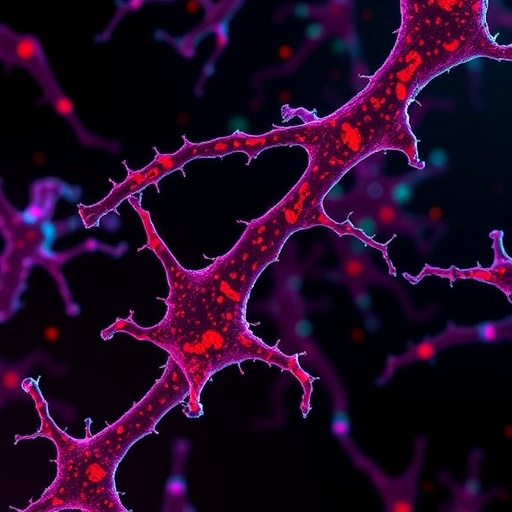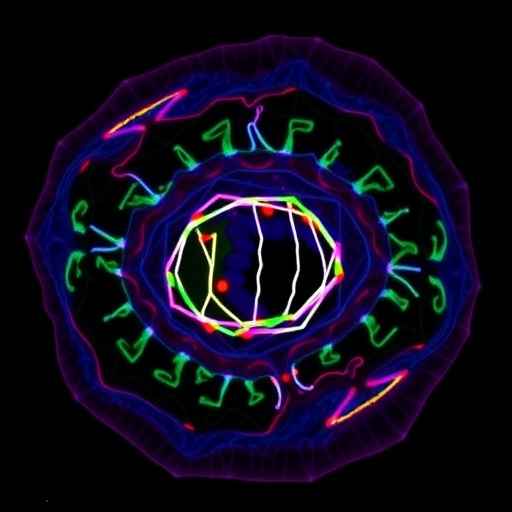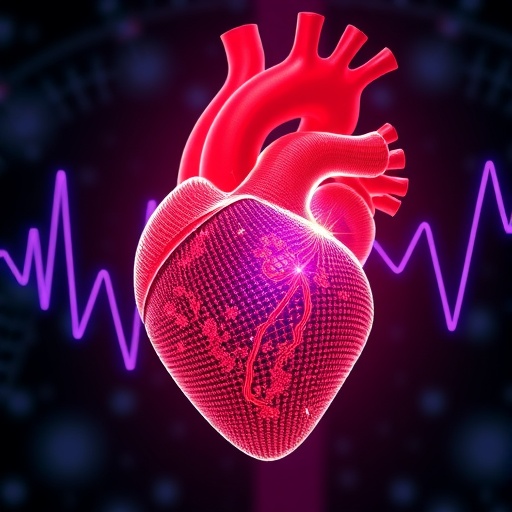
Cancer-associated fibroblasts (CAFs) have emerged as pivotal players in the complex microenvironment of tumors, orchestrating a multifaceted role that facilitates cancer progression, metastasis, and significant resistance to therapies. Recent comprehensive reviews highlight how CAFs actively produce extracellular matrix (ECM) components such as collagen, which not only provide structural support but dynamically influence tumor behavior and treatment outcomes. Unlike normal fibroblasts that transiently activate during wound healing, CAFs remain constitutively activated, persistently reshaping the tumor microenvironment (TME) in ways that challenge conventional cancer treatments.
One of the primary challenges posed by CAFs lies in their ability to generate a dense and complex ECM that severely impairs the penetration of therapeutic agents. While the enhanced permeability and retention (EPR) effect has been the cornerstone rationale for nanoparticle-based drug delivery—relying on the leaky vasculature of tumors—the excessive ECM produced by CAFs forms a formidable barrier. This barrier restricts the ability of nanoparticles, especially those around 100 nm in diameter commonly used in clinical formulations, from diffusing deep into tumor cores. Evidence suggests that only nanoparticles smaller than 30 nm can navigate through such dense matrices to reach the interior cancer cells, revealing a critical size-dependent limitation that challenges current drug delivery designs.
Moreover, the ECM created by CAFs restricts the infiltration of cytotoxic immune cells, particularly T lymphocytes, into the tumor mass. The T-cell migration mechanism known as ameboid movement depends on a loosely organized network of ECM fibers. When CAFs promote a high-density, fine-lattice ECM scaffold, this physical barrier impedes T cells’ mobility, preventing them from penetrating tumors effectively. This spatial exclusion of T cells from tumor interiors is a significant hurdle in immunotherapies, such as checkpoint inhibitors, where successful anti-tumor immune responses require direct contact between immune effector cells and cancer cells. The enhanced interstitial fluid pressure caused by this ECM also inhibits immune cell extravasation from blood vessels.
.adsslot_yox7VEl0ur{width:728px !important;height:90px !important;}
@media(max-width:1199px){ .adsslot_yox7VEl0ur{width:468px !important;height:60px !important;}
}
@media(max-width:767px){ .adsslot_yox7VEl0ur{width:320px !important;height:50px !important;}
}
ADVERTISEMENT
Beyond serving as a physical barricade, ECM components actively suppress immune functions through receptor-mediated signaling pathways. Collagen, a major ECM protein secreted by CAFs, interacts with leukocyte-associated immunoglobulin-like receptor 1 (LAIR-1) on T cells and natural killer (NK) cells. This interaction triggers inhibitory signals that dampen the cytotoxic activity of immune cells, contributing to the tumor’s immune evasion. Similarly, fibronectin engagement with leukocyte immunoglobulin-like receptor B4 (LILRB4) further enforces immunosuppression within the TME. These insights reveal how CAF-engineered ECM not only blocks cellular infiltration but also actively modulates immune cell functionality.
Another crucial role of the ECM is acting as a reservoir and regulator for growth factors fundamental to tumor progression. Transforming growth factor-beta (TGF-β), a well-known driver of fibrosis and cancer cell plasticity, remains stored in the ECM in a latent form, sequestered by a complex of peptides and ECM proteins. ECM degradation, often mediated by matrix metalloproteinases (MMPs) secreted by CAFs, releases active TGF-β, modulating the behavior of both cancer cells and surrounding stromal cells. Moreover, the mechanical properties of the ECM, such as its stiffness, can influence cancer cell fate decisions. For example, increased ECM stiffness in breast cancer is correlated with enhanced stemness and plasticity of tumor cells, while excessive rigidity paradoxically induces dormancy, creating niches for cancer relapse.
The involvement of CAFs extends beyond the primary tumor site to the promotion of metastasis, the spread of cancer cells to distant organs. One of the well-characterized mechanisms involves the induction of epithelial-mesenchymal transition (EMT), a phenotypic switch where epithelial cancer cells acquire mesenchymal traits, enhancing their migratory and invasive abilities. CAFs secrete a variety of cytokines—including tumor necrosis factor-alpha (TNF-α), interleukins such as IL-6 and IL-1β, and TGF-β—which orchestrate the EMT process. Notably, inflammatory CAFs (iCAFs) secrete IL-6, which has been shown to potentiate EMT in human bladder cancer cells, further endorsing the role of CAFs in promoting cancer cell plasticity and metastasis.
In parallel, CAFs actively remodel the ECM by secreting MMPs that degrade and reorganize matrix proteins. This remodeling creates “tracks” or channels within the ECM, facilitating cancer cell migration. Experimental data from co-culture studies show that CAFs infiltrate collagen gels matrix first, carving pathways that cancer cells subsequently follow, highlighting the cooperative invasion strategy. Interestingly, cancer stem cells exhibit enhanced migratory capacity in the presence of CAFs compared to non-stem cancer cells, suggesting that CAFs selectively foster the metastatic potential of more aggressive tumor cell subpopulations.
The ECM dynamics and stiffness modulated by CAF activity also influence tumor cell behavior and therapeutic response. In colorectal cancer liver metastases, for example, the mechanical forces exerted by ECM stimulate hepatic stellate cells to release free fatty acids, which are then utilized by cancer cells via fatty acid oxidation pathways to gain resistance against therapy. This metabolic crosstalk underscores the multifaceted interactions between stroma and cancer cells, positioning ECM not just as a scaffold but as an active metabolic influencer sustaining tumor survival.
With the recognition of CAFs as central architects of the tumor microenvironment and contributors to treatment resistance, therapeutic strategies targeting CAFs have gained momentum. Three primary approaches dominate current research: first is the inhibition of CAF activation or their secreted cytokines, focusing on signaling pathways that maintain CAF phenotype; second is the physical elimination of CAFs, using techniques such as chimeric antigen receptor (CAR) T-cell therapies directed against fibroblast activation protein (FAP) or antibodies that target CAF-specific antigens; third is the normalization of CAFs, wherein activated fibroblasts are reprogrammed into their resting state (rCAFs) through agents like pirfenidone or vitamin derivatives, thereby restoring a less fibrotic, more treatment-permissive microenvironment.
These strategies face challenges, notably the heterogeneity of CAF populations within tumors, which include myofibroblastic CAFs that produce excessive ECM, inflammatory CAFs that modulate immune responses, and antigen-presenting CAFs that foster immunosuppressive T regulatory cell formation. The multifaceted nature of CAFs requires nuanced therapeutic designs that can selectively modulate pathological CAF subtypes without disrupting normal fibroblast function in healthy tissue. Nonetheless, preclinical models show promising results, where CAF elimination or normalization leads to enhanced infiltration of immune cells and improved drug delivery.
The dense ECM scaffold produced by CAFs thus represents a double-edged sword; while it supports tumor growth and survival, it also presents an obstacle to effective treatment. Innovative nanomedicine designs are now exploring ultrasmall nanoparticles and ECM-degrading enzymes to improve therapeutic penetration. Simultaneously, combination therapies pairing CAF-targeting agents with immunotherapies or conventional chemotherapies are gaining traction, aiming to synergistically dismantle the protective stromal niche.
Importantly, the mechanobiology of tumors, influenced heavily by ECM stiffness, is garnering increasing attention in cancer research. By mechanically modulating the tumor landscape, CAFs influence not only the physical migration of cancer cells but also their phenotypic plasticity and metabolic state. These biomechanical cues represent new frontiers in understanding tumor heterogeneity and resistance mechanisms.
In conclusion, CAFs constitute a critical non-malignant cell population that profoundly remodels the tumor microenvironment through ECM production, immune suppression, and biochemical signaling. This tripartite influence drives therapeutic resistance and enhances cancer invasiveness, underscoring the urgent need for therapies that can modulate their activity. Future advancements in CAF-targeted therapies hold promise to overcome resistance barriers, improve drug delivery, and ultimately enhance patient outcomes in difficult-to-treat cancers such as pancreatic ductal adenocarcinoma and breast cancer.
Subject of Research: Cancer-associated fibroblasts and their roles in cancer progression, metastasis, and therapy resistance.
Article Title: Cancer-associated fibroblasts in cancer drug resistance and cancer progression: a review.
Article References:
Masuda, H. Cancer-associated fibroblasts in cancer drug resistance and cancer progression: a review. Cell Death Discov. 11, 341 (2025). https://doi.org/10.1038/s41420-025-02566-x
Image Credits: AI Generated
DOI: https://doi.org/10.1038/s41420-025-02566-x
Tags: cancer metastasis facilitatorscancer treatment outcomescancer-associated fibroblastsdrug resistance mechanismsECM density and compositionextracellular matrix componentsfibroblast activation in tumorsnanoparticle drug delivery challengessize-dependent drug delivery limitationstherapeutic agent penetration barrierstumor microenvironmenttumor progression factors





